This report is written by Tiger Research and analyzes the implementation of Chromia's vector database as a case of the integration of AI and blockchain technology.
Key Points Summary
On-chain Vector Infrastructure: Chromia has launched the first on-chain vector database built on PostgreSQL, marking an important step towards the practical integration of AI and blockchain.
Cost Efficiency and Developer Friendliness: By providing a blockchain-integrated development environment that is 57% cheaper than traditional industry vector solutions, Chromia lowers the entry barrier for AI-Web3 application development.
Future Outlook: The platform plans to expand into EVM indexing, AI inference capabilities, and broader developer ecosystem support, positioning Chromia as a potential leader in AI innovation within the Web3 space.
1. The Current State of AI and Blockchain Integration
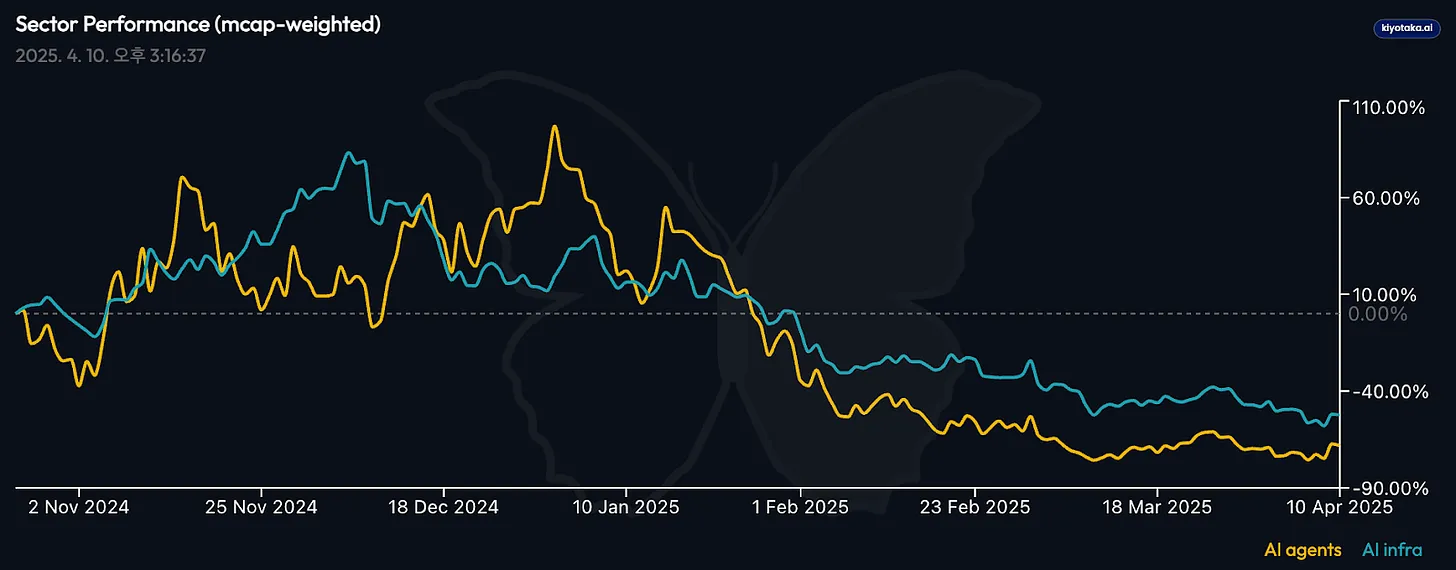
Source: Kiyotaka
The intersection of AI and blockchain has long attracted industry attention. Centralized AI systems still face challenges such as transparency, reliability, and cost predictability—areas often seen as potential solutions by blockchain.
Although the AI agent market is expected to explode by the end of 2024, most projects have only achieved superficial integration of the two technologies. Many initiatives rely on speculative interest in cryptocurrencies for funding and exposure rather than exploring deep technical or functional synergies with Web3. As a result, the valuations of numerous projects have dropped by over 90% from their peak.
The root of the difficulty in achieving substantial synergy between AI and blockchain lies in several structural challenges. The most prominent of these is the complexity of on-chain data processing—data remains fragmented and technology is highly volatile. If data access and utilization could be as simple as in traditional systems, the industry might have already achieved clearer outcomes.
This dilemma resembles the script of Romeo and Juliet: two powerful technologies from different domains lack a common language or true points of fusion. It is increasingly clear that the industry needs an infrastructure that can bridge the gap—complementing the strengths of both AI and blockchain while serving as a meeting point for the two.
Addressing this challenge requires a system that is both cost-effective and high-performance, matching the reliability of existing centralized tools. In this context, the vector database technology that supports most AI innovations today is becoming a key enabler.
2. The Necessity of Vector Databases
As AI applications become widespread, vector databases have emerged to address the limitations of traditional database systems. These databases store complex data such as text, images, and audio by converting them into mathematical representations known as "vectors." By retrieving data based on similarity (rather than precision), vector databases align more closely with AI's understanding of language and context than traditional databases.
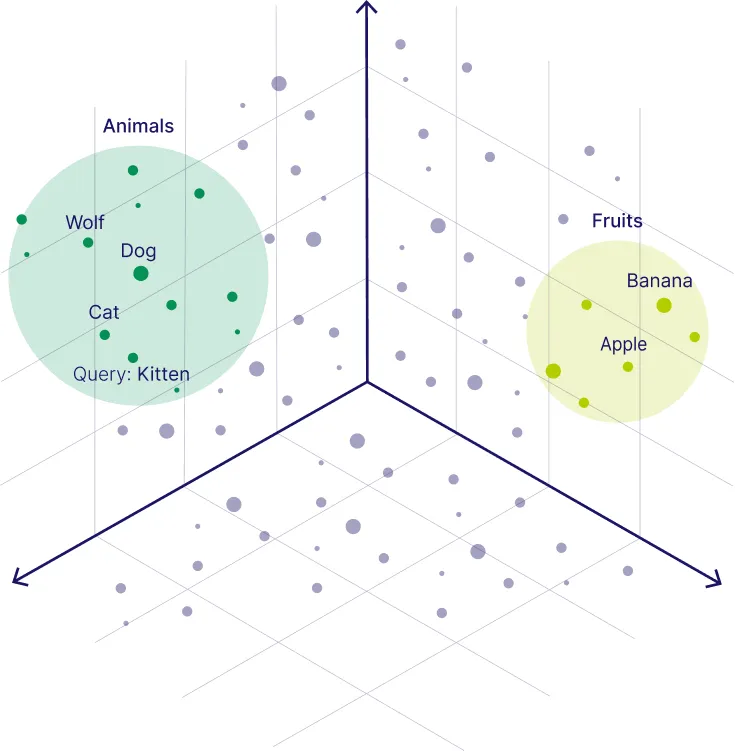
Source: weaviate
Traditional databases are like library catalogs—they only return books that contain the word "kitten," while vector databases can present related content such as "cat," "dog," and "wolf." This is due to the system storing information in numerical vector form, capturing relationships based on conceptual similarity (rather than exact wording).
For example, in a conversation: when asked, "How are you feeling today?" if the response is "The sky is particularly clear," we can still understand the positive sentiment—even though no explicit emotional vocabulary is used. Vector databases operate in a similar way, allowing systems to interpret underlying meanings rather than relying on direct word matching. This simulates human cognitive patterns, enabling more natural and intelligent AI interactions.
In Web2, the value of vector databases has been widely recognized. Platforms like Pinecone ($100 million), Weaviate ($50 million), Milvus ($60 million), and Chroma ($18 million) have received substantial investments. In contrast, Web3 has consistently struggled to develop comparable solutions, leaving the integration of AI and blockchain largely theoretical.
3. The Vision of Chromia's On-chain Vector Database
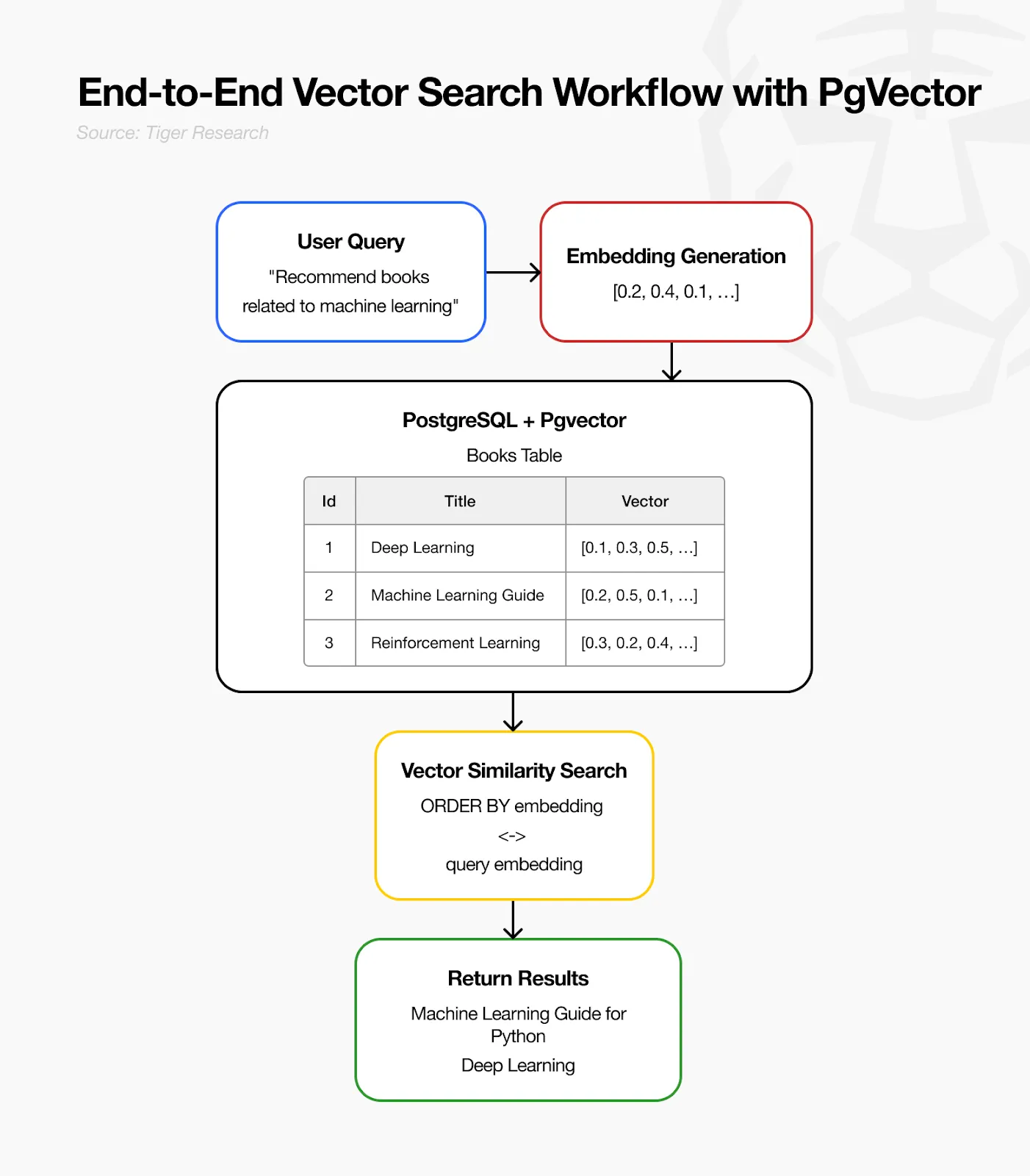
Source: Tiger Research
Chromia—a Layer1 relational blockchain built on PostgreSQL—stands out with its structured data processing capabilities and developer-friendly environment. Leveraging its relational database foundation, Chromia has begun exploring deep integration between blockchain and AI technologies.
A recent milestone is the launch of "Chromia Extend," which integrates PgVector (an open-source vector similarity search tool widely used within PostgreSQL databases). PgVector supports efficient querying of similar text or images, providing clear practicality for AI-driven applications.
PgVector has already established a strong foothold in the traditional tech ecosystem. Often seen as a replacement for mainstream database service Firebase, Supabase uses PgVector to support high-performance vector searches. Its growing popularity on the PostgreSQL platform reflects widespread industry confidence in this tool.
By integrating PgVector, Chromia brings vector search capabilities to Web3, aligning its infrastructure with the proven standards of traditional tech stacks. This integration plays a core role in the Mimir mainnet upgrade in March 2025, seen as a foundational step towards seamless interoperability between AI and blockchain.
3.1 Integrated Development Environment: Complete Fusion of Blockchain and AI
The biggest challenge developers face when trying to combine blockchain and AI is complexity. Creating AI applications on existing blockchains requires a complex process of connecting multiple external systems. For example, developers need to store data on-chain, run AI models on external servers, and build independent vector databases.
This fragmented structure leads to inefficient operations. User queries are processed off-chain, and data must continuously migrate between on-chain and off-chain environments. This not only increases development time and infrastructure costs but also creates significant security vulnerabilities—data transmission between systems heightens the risk of hacking and reduces overall transparency.
Chromia provides a fundamental solution by directly integrating the vector database into the blockchain. On Chromia, all processing occurs on-chain: user queries are converted into vectors, similar data is searched directly on-chain, and results are returned, achieving end-to-end processing in a single environment.
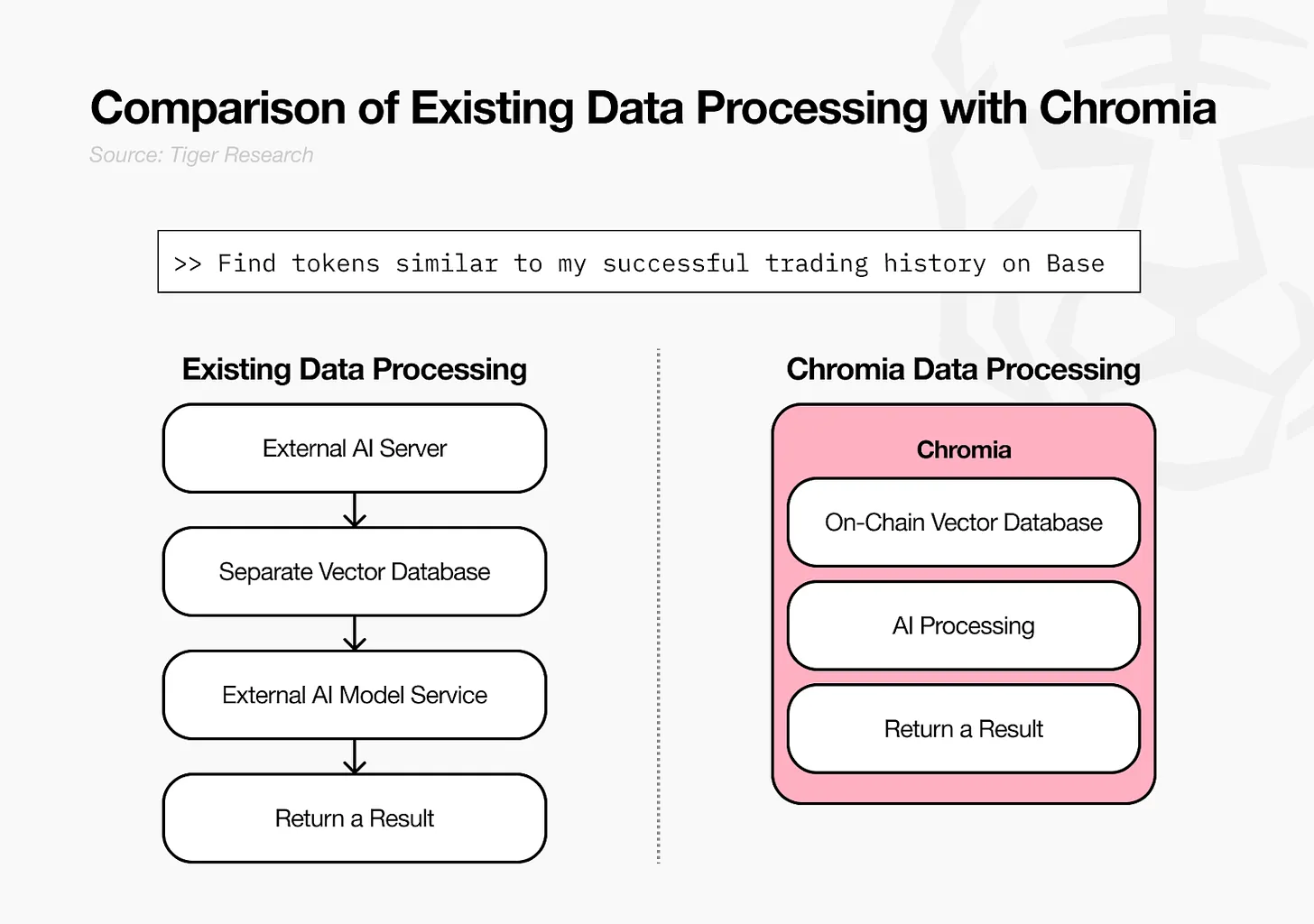
Source: Tiger Research
To illustrate with a simple analogy: previously, developers had to manage components separately—like cooking requiring the purchase of pots, pans, blenders, and ovens. Chromia simplifies the process by providing a multifunctional food processor that integrates all functions into a single system.
This integrated approach greatly simplifies the development process. There is no need for external services and complex connection code, reducing development time and costs. Additionally, all data and processing are recorded on-chain, ensuring complete transparency. This marks the beginning of the complete fusion of blockchain and AI.
3.2 Cost Efficiency: Superior Price Competitiveness Compared to Existing Services
There is a common stereotype that on-chain services are "inconvenient and expensive." Especially in traditional blockchain models, the structural flaws of generating fuel fees for each transaction and skyrocketing costs during network congestion are significant. Cost unpredictability has become a major barrier for enterprises adopting blockchain solutions.
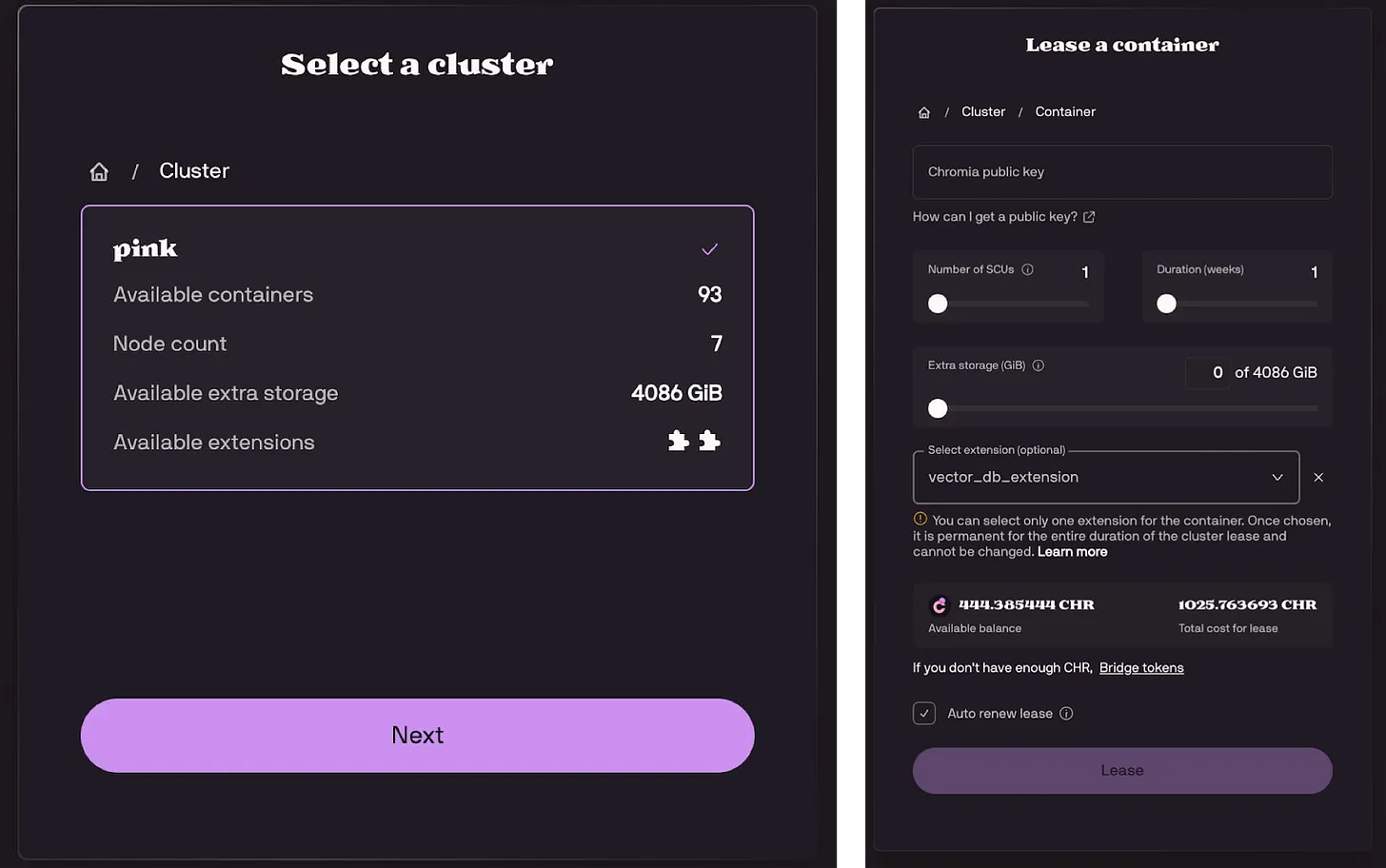
Source: Chromia
Chromia addresses these pain points through an efficient architecture and differentiated business model. Unlike the fuel fee model of traditional blockchains, Chromia introduces a server computing unit (SCU) leasing system—similar to the pricing structures of AWS or Google Cloud. This instance-based model aligns with familiar cloud service pricing, eliminating the common cost fluctuations of blockchain networks.
Specifically, users can lease SCUs weekly using Chromia's native token $CHR. Each SCU provides 16GB of baseline storage, with costs scaling linearly with usage. SCUs can be flexibly adjusted according to demand, enabling efficient resource allocation. This model integrates predictable usage pricing from Web2 services while maintaining network decentralization—significantly enhancing cost transparency and efficiency.
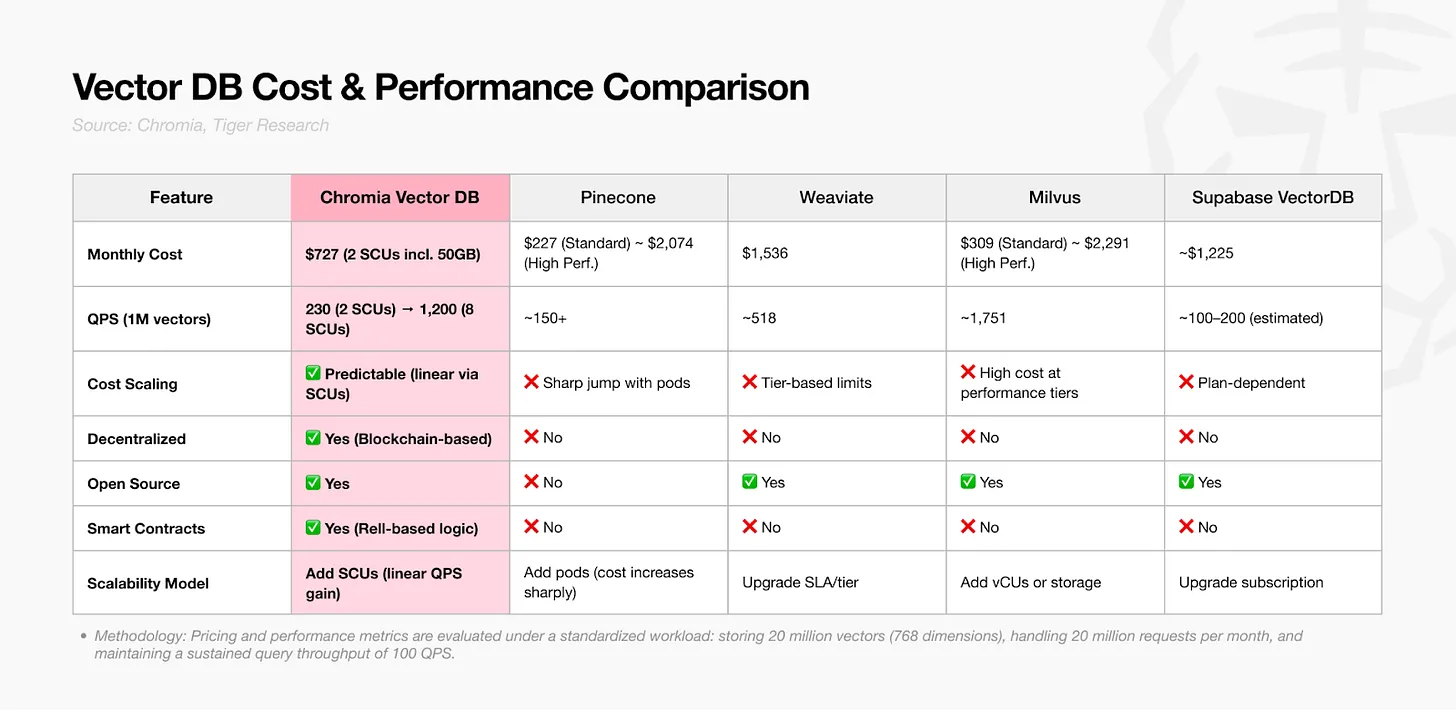
Source: Chromia, Tiger Research
The Chromia vector database further strengthens cost advantages. According to internal benchmarks, the monthly operational cost of this database is $727 (based on 2 SCUs and 50GB of storage)—57% lower than comparable Web2 vector database solutions.
This price competitiveness stems from multiple structural efficiencies. Chromia benefits from the technical optimization of adapting PgVector to the on-chain environment, but the greater impact comes from its decentralized resource supply model. Traditional services impose high service premiums on AWS or GCP infrastructure, while Chromia provides computing power and storage directly through node operators, reducing intermediaries and associated costs.
The distributed structure also enhances service reliability. The parallel operation of multiple nodes naturally endows the network with high availability—even if individual nodes fail. Therefore, the typical high costs associated with high availability infrastructure and large support teams in Web2 SaaS models are significantly reduced, lowering operational costs and enhancing system resilience.
4. The Beginning of the Integration of Blockchain and AI
Despite being launched only a month ago, the Chromia vector database has already shown early appeal, with multiple innovative use cases in development. To accelerate adoption, Chromia actively supports builders by funding the costs associated with using the vector database.
These grants lower the experimental threshold, allowing developers to explore new ideas with reduced risk. Potential applications include AI-integrated DeFi services, transparent content recommendation systems, user-owned data sharing platforms, and community-driven knowledge management tools.
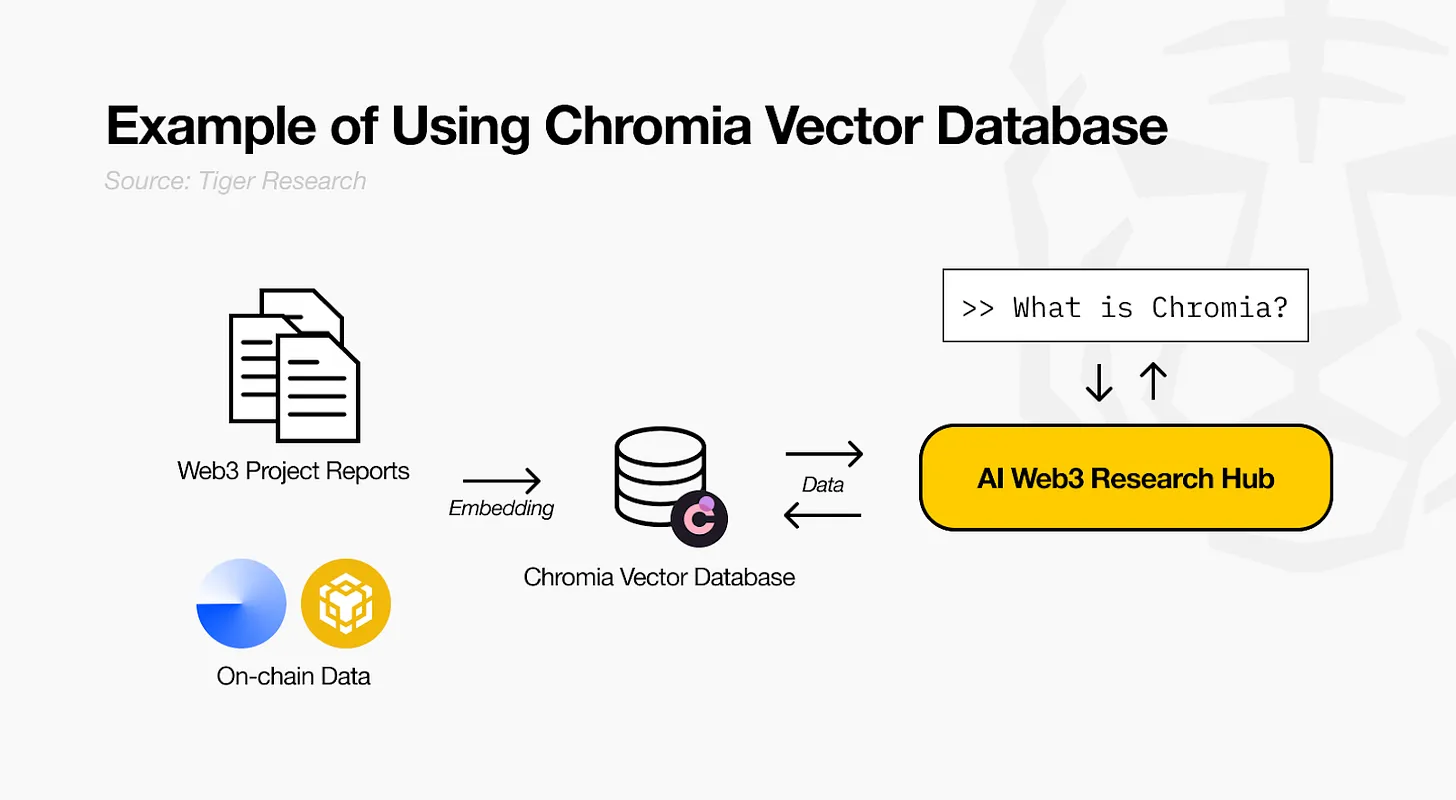
Source: Tiger Research
An example case is the "AI Web3 Research Hub" developed by Tiger Labs. This system utilizes Chromia's infrastructure to convert research content and on-chain data from Web3 projects into vector embeddings for AI agents to provide intelligent services.
These AI agents can directly query on-chain data through the Chromia vector database, achieving significantly accelerated responses. Combined with Chromia's EVM indexing capabilities, the system can analyze on-chain activities across Ethereum, BNB Chain, Base, and more—supporting a wide range of projects. Notably, user conversation context is stored on-chain, providing complete transparency in recommendation flows for end users such as investors.

Source: Tiger Research
As the diversity of use cases grows, more data continues to be generated and stored in Chromia—laying the foundation for an "AI flywheel." Text, images, and transaction data from blockchain applications are stored in structured vector form within the Chromia database, creating a rich dataset for AI training.
This accumulated data becomes core learning material for AI, driving continuous performance improvements. For example, AI that learns from vast user transaction patterns can provide more accurate and customized financial advice. These advanced AI applications attract more users by enhancing user experience, and user growth will further generate richer data accumulation, forming a self-sustaining ecosystem.
5. Chromia's Roadmap
Following the launch of the Mimir mainnet, Chromia will focus on three key areas:
Enhancing EVM indexing for mainstream chains such as BSC, Ethereum, and Base;
Expanding AI inference capabilities to support a wider range of models and use cases;
Expanding the developer ecosystem through more user-friendly tools and infrastructure.
5.1 EVM Indexing Innovations
The inherent complexity of blockchain has long been a major barrier for developers. To address this, Chromia has launched a developer-centric innovative indexing solution aimed at fundamentally simplifying on-chain data queries. The goal is clear: to make blockchain data more accessible by significantly improving query efficiency and flexibility.
This approach represents a significant shift in how Ethereum NFT transaction tracking is conducted. Chromia dynamically learns data patterns and structures, replacing rigid predefined query structures to identify the most efficient information retrieval paths. Game developers can instantly analyze on-chain item transaction histories, while DeFi projects can quickly track complex transaction flows.
5.2 Expansion of AI Inference Capabilities
The aforementioned data indexing advancements lay the groundwork for Chromia to expand its AI inference capabilities. The project has successfully launched its first AI inference extension on the testnet, focusing on supporting open-source AI models. Notably, the introduction of a Python client has significantly reduced the difficulty of integrating machine learning models within the Chromia environment.
This development goes beyond technical optimization, reflecting a strategic alignment with the fast-paced innovation of AI models. By supporting the direct operation of increasingly diverse and powerful AI models on vendor nodes, Chromia aims to push the boundaries of distributed AI learning and inference.
5.3 Developer Ecosystem Expansion Strategy
Chromia is actively building partnerships to unlock the full potential of vector database technology, with a focus on AI-driven application development. These efforts aim to enhance network utility and demand.
The company targets high-impact areas such as AI research agents, decentralized recommendation systems, context-aware text search, and semantic similarity search. This plan goes beyond technical support—creating a platform where developers can build applications that deliver real user value. The previously enhanced data indexing and AI inference capabilities are expected to become the core engines for the development of these applications.
6. Chromia's Vision and Market Challenges
Chromia's on-chain vector database positions it as a leading competitor in the blockchain-AI integration space. Its innovative approach—directly integrating the vector database on-chain—has not been realized in other ecosystems, highlighting a clear technological advantage.
The platform's cloud-like SCU leasing model also introduces an enticing paradigm shift for developers accustomed to fuel fee systems. This predictable and optimized cost structure is particularly well-suited for large-scale AI applications, constituting a key differentiator. Notably, the usage costs are approximately 57% lower than Web2 vector database services, significantly enhancing Chromia's market competitiveness.
Nevertheless, Chromia faces critical challenges—especially in market awareness and ecosystem growth. It is crucial to communicate its complex innovations, such as its native programming language (Rell) and on-chain AI integration, to developers and enterprises. Maintaining a leading position requires ongoing technical development and ecosystem expansion, especially as other blockchain platforms begin to target similar use cases.
Long-term success depends on validating real-world use cases and ensuring the sustainability of the token economic model. The impact of the SCU leasing model on the long-term value of the token, effective developer adoption strategies, and the creation of substantive commercial application cases will be decisive factors in Chromia's future development.
Chromia has established an early leadership position in the emerging Web3-AI integration space. However, translating technological differentiation into lasting market value will require continuous progress at the infrastructure, ecosystem, and communication levels. The next 12-24 months will be crucial in shaping Chromia's long-term trajectory.
免责声明:本文章仅代表作者个人观点,不代表本平台的立场和观点。本文章仅供信息分享,不构成对任何人的任何投资建议。用户与作者之间的任何争议,与本平台无关。如网页中刊载的文章或图片涉及侵权,请提供相关的权利证明和身份证明发送邮件到support@aicoin.com,本平台相关工作人员将会进行核查。




